Whether we want to admit it to ourselves or not, snails and their even yuckier relatives – slugs, have been a part of mankind’s diet for as long as our collective memory can reach. Some cultures today eat them on a regular basis and even serve them in restaurants (looking at you, France).
So, it’s fairly safe to assume that, in a pinch out in the wilderness, you can stomach a morsel of these nutritious gastropods (no pun intended).
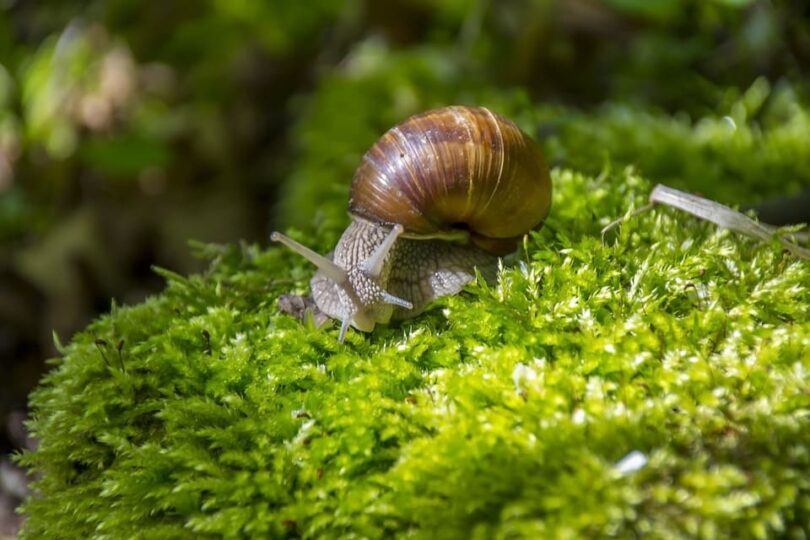
This applies not only to snails – many things we wouldn’t even think of touching, let alone putting in our mouth are on the table (here, the pun is very much intended) – all sorts of slugs, bugs and grubs, ants, grasshoppers, crickets, locusts, even June bugs, scorpions and tarantulas (as a matter of fact, grilled skewered tarantula don’t taste half as bad). For an article on edible insects, please click on the link to be amazed.
Go full Timon and Pumbaa on them. Hakuna Matata! Although the folks in the States are slow to accept snails as a viable food source, it’s not unheard of. There’s even a National Escargot Day designated – May 24th. They’re available at almost any supermarket, and you can prepare them as a nice appetizer or even as a main course.
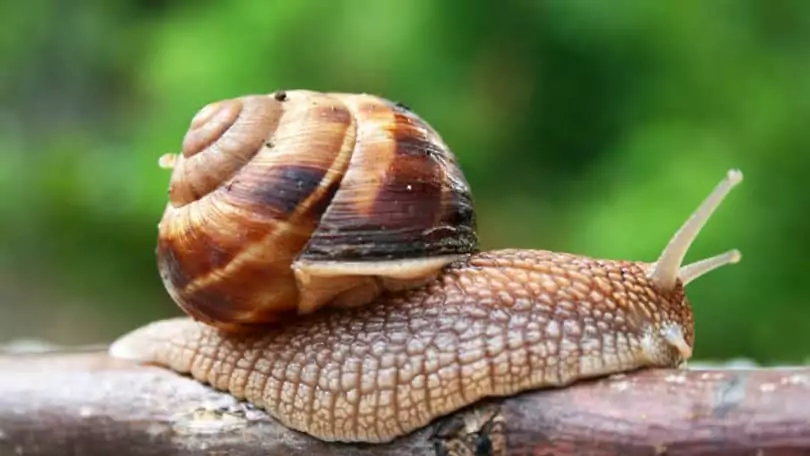
The French word even quite translates to “edible snails”, and is applied to both the dish and the living snails of that particular species generally prepared and eaten this way.
Snails vs Slugs: A Race to the Death
Although the bulk of what you’re about to read will be dedicated to snails, it would be remiss on our part to not mention their destitute cousins – slugs. For those of you not in the know (although this is hardly imaginable), we’ll paint with a broad brush and say that the difference between the two is that snails have a shell, whereas slugs don’t.
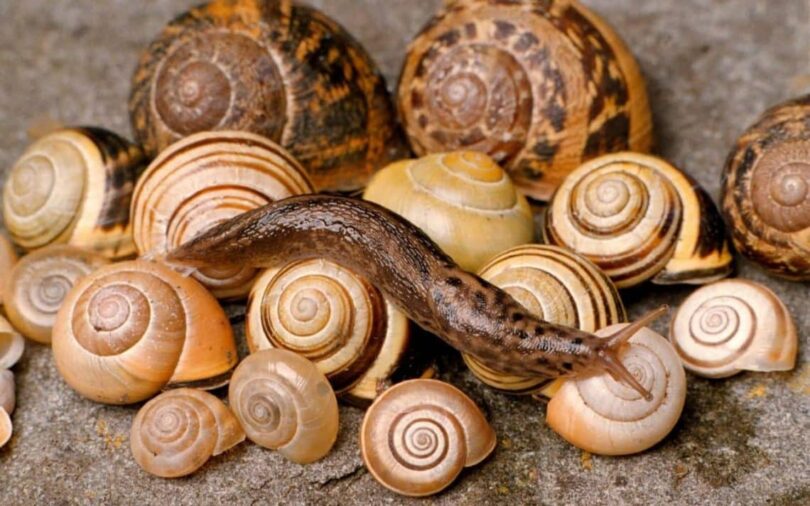
There are other differences that might interest a biologist, but for all intents and purposes, this will suffice. Incidentally, both are edible, though whether they’re at all palatable will probably depend on your taste buds and preconceptions.
Continuing to paint with broad strokes, we can divide the snails themselves into three major categories, depending on where you can find them. In a (nut)shell, there are Land Snails, Freshwater Snails and Seaside Snails. Once again, there are no truly poisonous snails or slugs, as far as the land varieties go. The other two can be a bit problematic.
Land snails are pretty much all edible, provided you cook them thoroughly. There are many species in the States, some native, some imported from Europe and Africa, but all are completely safe to be used for food. Although come to think of it, you might want to watch out for the tiger snail (Anguispira alternata), and avoid it at all costs.
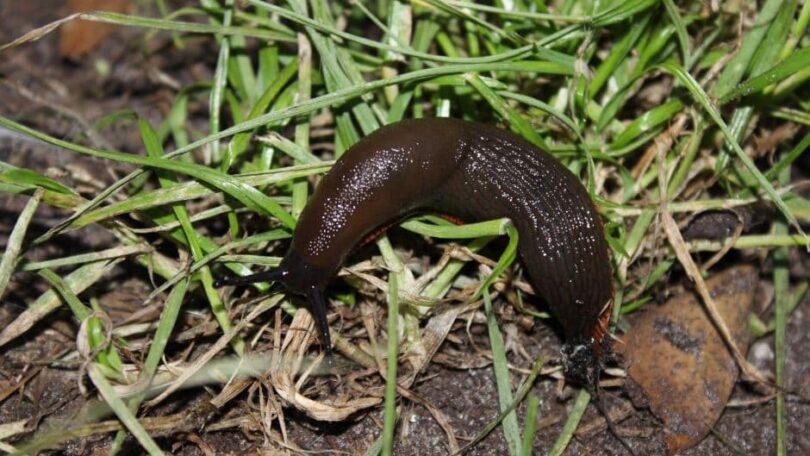
The problem, as you probably suspect, is that it tastes awful, and even the people who find snails to be a delicacy agree with this. You’ll recognize it by the characteristic pattern on its shell that makes it look like, you guessed it, a tiger.
Snail Husbandry: How to Farm Snails in Your Backyard
Much like with any other food source, people found the way to farm snails. Of course, the yield won’t be as that of beef, but the market isn’t as big, so it sort of evens out. Interestingly enough, snail meat is less expensive than beef, so there’s that to consider.
There are some people that even eat snail eggs, or as they are called, snail caviar, though the market for that is even smaller than the one for escargot.
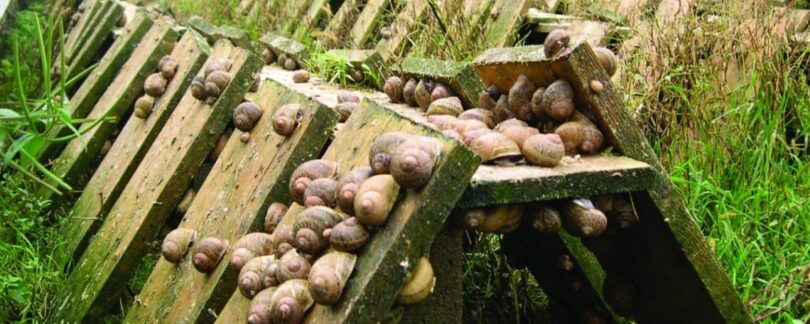
Snail farming is known as heliciculture, and it’s an important part of not only food scenes around the world, but also cosmetics (yes, ladies, you read that right). Still, there’s nothing stopping you from making a small farm in your own backyard. Here’s how in a few easy steps:
- First, see if the climate suits; snails prefer warm and humid areas (about 70–90 degrees F). Also, try and find a sheltered area, something in the lee of a wall, as the air dries out the snails, which can have a negative effect on their growth.
- Next, you’ll need to fence in that area –decide how big you want it, but make sure it lets you reach every spot from the outside. Two feet in height should suffice, and don’t forget to dig it in at least five inches – snails love to burrow.
- Anything will do – fine chicken mesh, concrete blocks, bricks, whatever you have available. You can roof it, or make the sides curve inwards so that the snails can’t escape.
- Fill it with the appropriate soil, and keep it loose. Whatever you do, don’t use overly sandy soil (doesn’t hold water), clay (too hard) or acidic soil (damages the shells).
- Plant the appropriate vegetation – shrubs, pumpkins, sweet potatoes, leafy veggies, lettuce, they’re all good.
- Add a small, shallow container for water. It has to be shallow so that the snails don’t drown (yes, that’s a possibility). Don’t use tap water to fill it, the chlorine will have an adverse effect on the snails; instead, let it collect rainwater.
- Profit!
The most commonly grown species is the Burgundy or Roman snail (Helix pomatia), though what you’ll grow depends on your local climate. The best way to decide is to take a walk around your garden/backyard (provided you didn’t put snail pellets) and see which species you can find ranging freely.
Collecting Snails: The Elusive Prey
Now that the obligatory joke about speed is out of the way, let’s find out how to collect enough snails for a meal without rearing them personally.
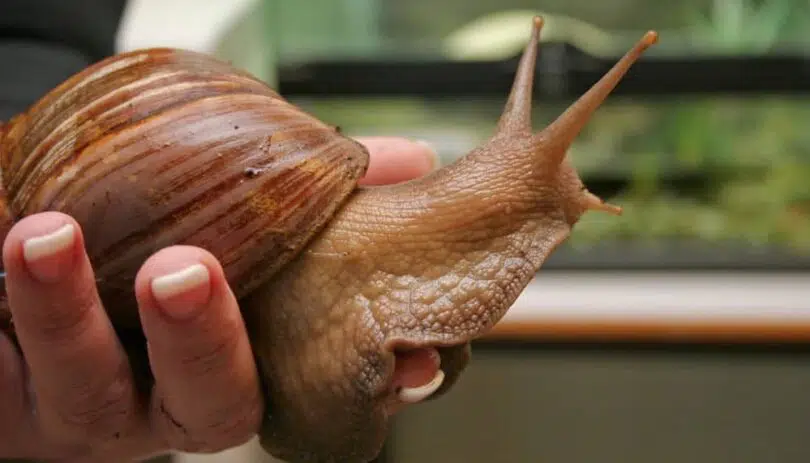
Small, drab colored snails are, more likely than not, edible, as they blend in with their surroundings, and therefore don’t need poison to protect them from the predators. Come to think of it, this applies for most any kind of wildlife.
Flashy colors invariably mean poison, so don’t touch those(think poison dart frogs from those the documentaries about the Amazonian rainforest). Seeing how all known varieties of land snails are like this, they’re all completely safe to consume (except, as we mentioned earlier, the tiger snail, which is just nasty).
Freshwater snails are similarly edible to the last, though these are inherently risky not only to consume but also to collect. The problem is not the snail itself, but a type of parasitic flatworms called schistosomias, which are unpleasant all around.
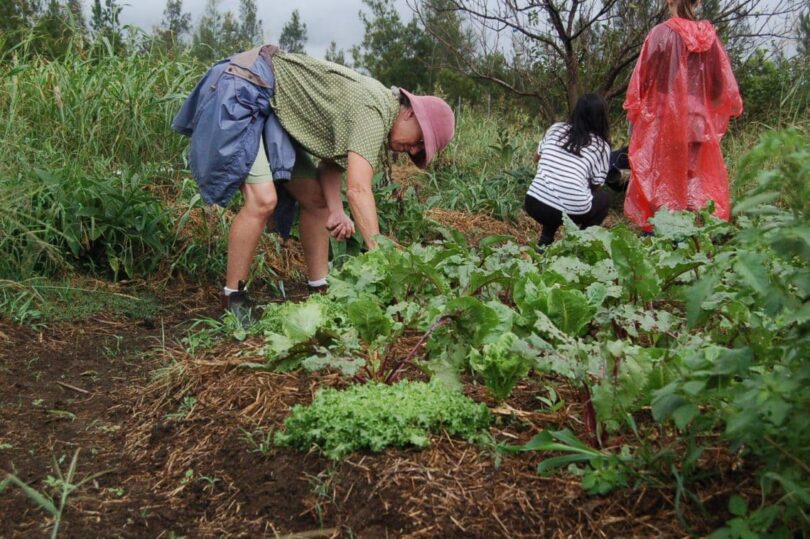
The parasite is transmitted through freshwater and can get into a person’s body through as banal a thing as a paper-cut. On a similar note, sea snails are perfectly edible, and most of those you’ll be able to collect from the shallows are like that.
Always bear in mind the rule of thumb for distinguishing poisonous things from non-poisonous – if it’s flashy and colorful, don’t touch it. Even so, the fact that it’s drab does in no way mean it’s tasty. Remember, edible is not the same as eatable.
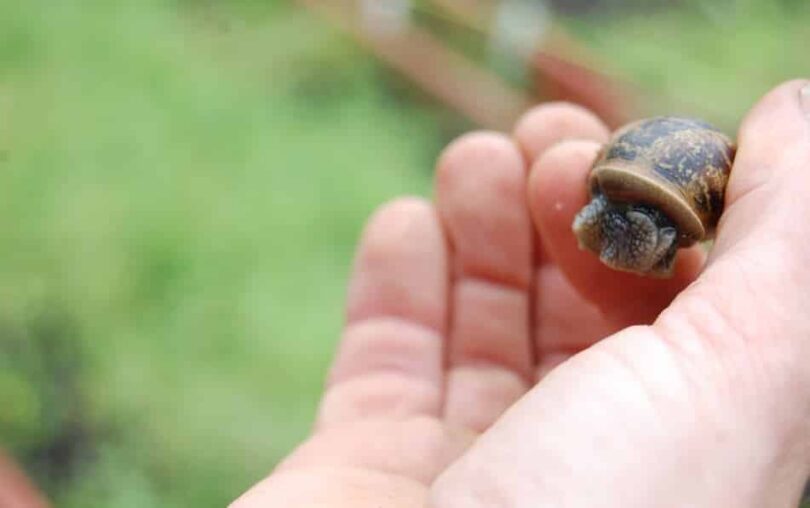
Here’s what passes for food in a pinch in the US (we even included the Latin names so people can feel fancy reading it):
- Florida Apple Snails (Pomaceamaculata);
- Island Apple Snails (Pomaceainsularum);
- Giant African snail (Achatinafulica)
- Wood snail (Cepaeanemoralis);
- Green (burrowing) snail (Helix aperta);
- European brown snail, a.k.a. spotted snail or Petit Gris (Helix aspersa);
- Milk snail, also called Spanish snail (Otalalactea);
- White snail (Thebapisana);
- Otalavermiculata (no common name, found in Louisiana, around NO), and, finally,
- Burgundy or Roman snail, most widely referred as Escargot (Helix pomatialinnaeus);
Oregon banana slugs are a popular choice as far as slugs go, and you’ll often see dogs scrambling for them.
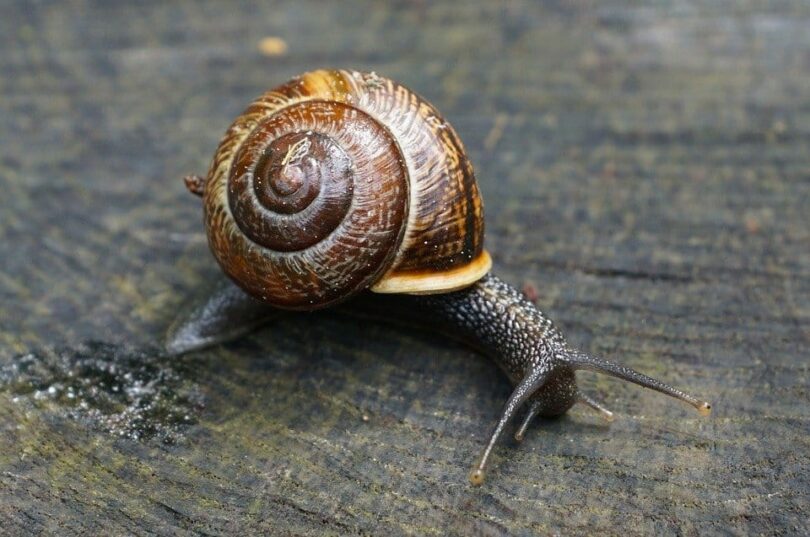
Catching the snails is a piece of cake – all you have to do is take a walk in the evening. Look for dark and damp places. Snails will go into hibernation when it’s dry around them, which means that they’re mostly active in the rainy season.
For example, the French used to collect them (and they still do) in fall, since they’re just entering their winter hibernation and they’re plump and fat. The best thing to do is wait for the rain, and go immediately after it’s done falling. You’ll be tripping over snails and slugs. Pick the juiciest, and leave the rest so that the population remains stable.
A word to the wise – if you live in a suburban area, don’t collect the snails from your backyard unless you’ve grown them yourself in an enclosure.
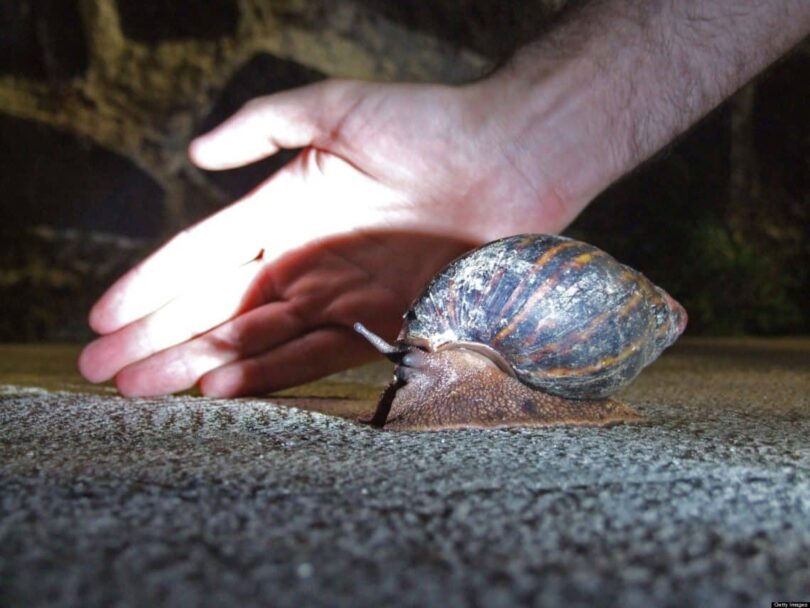
The reason for this is that there’s a chance your neighbors have been putting snail pellets (also works for slugs), so there’s actual risk of chemical poisoning; check with your neighbors, and perhaps invite them over for dinner.
Gastropods for Gastronomes: How to Go Full Timon&Pumbaa (or Avoid It)
To Purge, or Not To Purge: A Question of Safety
Snails don’t kill, not if they’ve been thoroughly cooked, but they can cause… severe indigestion, shall we say. Come to think of it, if an adequately ravenous horde of living snails could get together, they’d probably be able to put an end to an inordinately lethargic human, though the scenario is pretty unlikely.
On a more serious note, it’s important to purge the snails prior to actually cooking them, to get rid of the toxins they have accumulated through their usual diet.
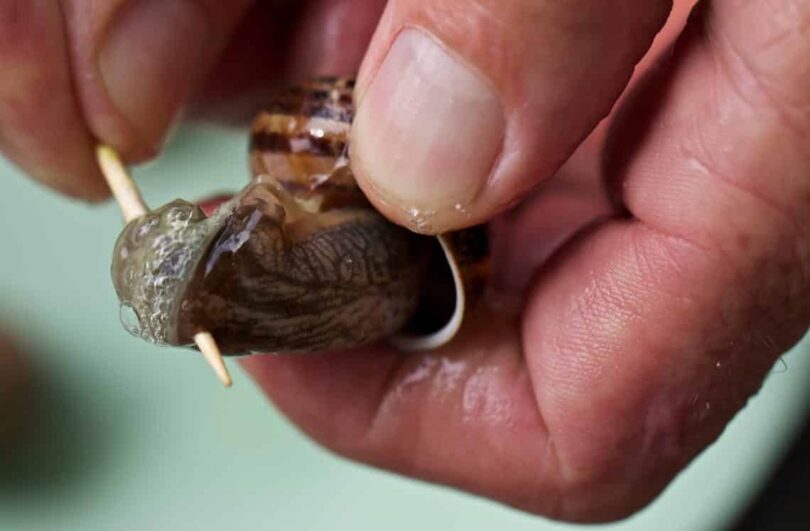
It’s much easier to do this in the safety of suburban America, but if you can, try to follow all these steps if you find yourself in the wilds. Here’s what you want to do – once you’ve collected the snails, wash them thoroughly, and then put them in a jar or any sort of container.
Make sure it’s sealed tight, so that they can’t escape, but at the same time, make some holes so that they have a steady flow of air. For example, you could use a plain ole bucket and a pair of tights (also old) as cover. Keep them without food or water for at least 48 hours.
If you can, feed the snails carrots on the third day. Some folks will feed them corn meal for seven days straight – they claim the meat tastes just like cornbread if you do. Of course, if you’re in a survival situation, feel free to skip this step.
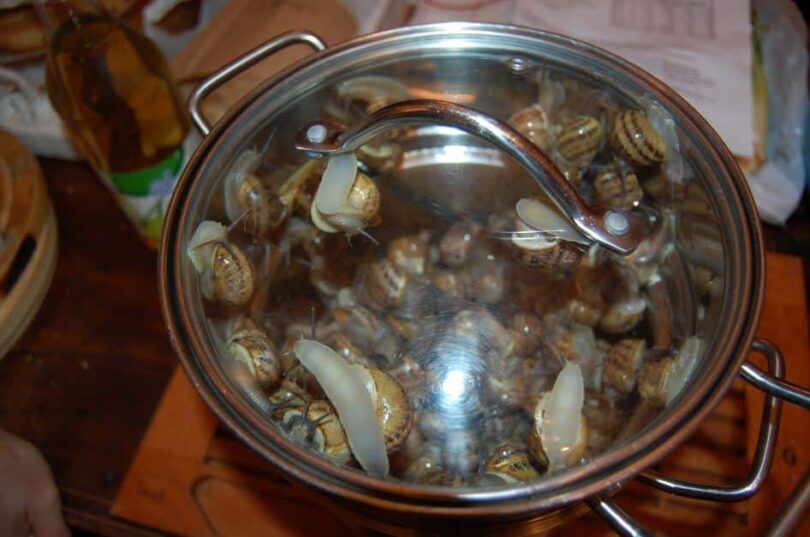
Now, if you gave them carrots, you should more or less wait for their poop to start coming out orange. This is when you know they’re ready. Rub them with salt to remove the slime, wash them again, and prepare any way you like (you can also use lime or lemon juice instead of salt).
Snail It: Dos and Don’ts of Snail Cooking
Here are a few of the most popular recipes for snails, both for those who mean to eat them at home and backpackers on a budget. Either way you go, you’re in for an adventure.
The Great Indoors: Cooking the Snails At Home
- Classic Escargot – purge the snails in a jar with damp lettuce. After 24 to 48 hours, take them out, kill them and clean them. Bring a cup of white wine (or water) to boil in a large sauté pan and add the snails. As they begin to cook, add a stick of butter and a couple of cloves (or more) of garlic, minced, and sauté everything for about five minutes.
- Fried Snails (also works for slugs) – after purging and cleaning the slugs/snails, scold them in boiling water for a couple of minutes. After this initial step, the protocol is the same as if you were frying chicken – dredge the slugs/snails in eggs, and then roll them in bread crumbs. Deep-fry or air-fry in your favorite oil until golden brown. Be sure to serve them while they’re still hot.
- Pasta with Snails (also good with slugs or clams)–purge the snails, kill them, clean them. Fry them in a buttered skillet until done. Add them to your favorite pasta sauce and let it simmer for eight to ten minutes.
- Snails in garlic butter – you’ll need to keep the shells for this one, so you’ll have to sweat a little bit trying to pry them out without damaging it. Presuming you’ve purged and cleaned the snails, you take some butter, onions, garlic and parsley, then mash it all together. Add lemon juice, salt, and pepper to taste. Squeeze a snail into each shell, and then fill in the empty space with the butter. Bake in a preheated oven on 420°F for about ten minutes.
The Great Outdoors: Cooking the Snails in the Wild
- Backwoods Boil–this is a very minimalist way of making snails. Take how many snails and/or slugs you can find, and clean them as best as you can. If you’re able, purge them first. Boil them in water for about ten minutes. Take them out, wash thoroughly and boil once more. This way you’ll be sure they’re clean of slime, but it will also reduce the nutrients. The choice is yours. Add whatever seasoning you’re able to find (or that you brought with you) – wild onions, wild garlic, leeks, anything with strong flavor is fine. Bring to a boil and enjoy.
- Fried Snails/Slugs – once more, purge the snails if you can before preparing them, if it’s possible. Take them out, wash them, gut them, wash them again. Put some butter or oil in a skillet and fry until crisp. Try and find wild leek to go along. This method also works for grubs or grasshoppers.
- Skewers of Snails – find as many snails, slugs, and grubs as you can. You could also add mushrooms if you can find some. Choosing the mushrooms is an entirely different topic, however. Find some twigs to serve as skewers (even rosemary can serve the purpose), remove the bark, wash it and sharpen. Alternate your ingredients on a skewer. Grill it or fry it in oil, whichever floats your boat.
Snail Poisoning: How to Avoid Upsetting Your Tummy
Speaking in general, there are three causes you might have food poisoning from eating snails – poison from the snail/slug itself (you ate the pretty one, didn’t you?), parasites from the snails (not purged/cooked well enough), or something completely unrelated.

The first problem is easily avoided – stick to the drab, boring, unexciting land snails. Just to be safe, when you do prepare a new variety of snail, something you haven’t eaten by that point, take a small bite and wait for a couple of hours. If nothing has happened, eat a whole snail, and wait another couple of hours.
If there are no symptoms, it’s safe to proceed. A word to the wise – don’t prepare the whole batch before trying the one; it’ll just get cold by the time you test it. See our article on first aid kits readiness and make sure all the medicines are not expired.
The second problem is more serious, however. Slugs and snails are not parasites themselves, but they do host parasites, most notably the lung worm which resides in slugs. This is one of the main reasons most folks avoid even discussing slugs as a food source, even among survivalist community.

The diet of some slugs consists, among other things, of rat feces, which is how they get the parasite in them. Proper cooking should eliminate the worm from the slug, but transmission is still possible by touch. So, always wear gloves and/or thoroughly wash your hands (looks like literally everyone’s mother was right).
The third problem is related to freshwater snails and what the doctors call schistosomiasis, but it’s better known as snail fever. Symptoms will not appear before the fourth week, and even then it’ll be more of a malaise, general feeling of weakness, followed by a light rash.
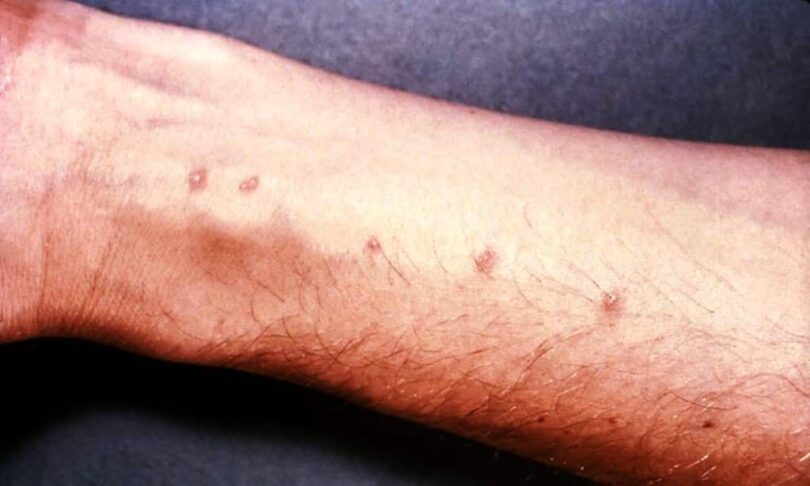
If not treated for a long time, the infection may cause severe consequences. It’s caused not by snails, of course, but by parasitic flatworms called schistosomes. However, a certain variety of freshwater snail is the primary host to the worm. Funnily enough, you’re more likely to contract it by collecting the snails than ingestion.
Whatever the reason, the moral of the story is clear – have gloves at the ready at all times. If not, make sure to wash your hands regularly, and have plenty of clean water. You can always purify it by boiling – if it worked for our ancestors, it should work fine for us today.
See our article on more survival tactics to guide and keep you safe from harm.






In different adventures that I have journeyed, never did I miss to meet a snail or a slug. No matter how my friends persuade me to cook some, as part of our escapade, I do not even want to give a short thought about it. Snails do eat plants, but does that conclude that uncultured snails are safe to consume?
I have been spending sometime culturing snails in our area. Most of the time, I take them out and place them in a saucer that has access of water. As I observe them, they seem drinking some water, but I cannot tell whether they really are. Because of this, I want to clarify whether they need water or any liquid to survive, or a plain vegetable diet will do.
Snails are fond of plant matter and veggies, such as dandelion greens and cucumbers. It is said that snails, semi-slugs and slugs do drink fresh water.
Not all snails are edible. Personally, I would advise against eating unknown snail species, especially in the unknown. So, you should be well-conversant with edible snails.
Well, I don’t know if I will ever try eating snails, but I can see the nutrition advantage, for 100 grams it has about 17 grams of protein and it’s low on calories, 90 to be exact. So, for those who have no problem eating them, they could be an asset in a high protein, low fat, low carb diet.
One beneficial characteristic when it comes to breeding snails is that they all have the capacity to lay eggs. When it comes to breeding, you don’t have to interfere, they seem to know what to do. Also, it’s good to keep in mind that snails are hermaphrodites; so, they have both male and female reproductive parts.
Personally, I will consume snails in a survival situation. Anyway, snails provide you with protein, iron, magnesium, omega 3, and vitamin B12.
We are glad our article has been helpful to you. Snail breeding doesn’t have to be a difficult proposition. All you need are the right tips, which we have provided in this article.